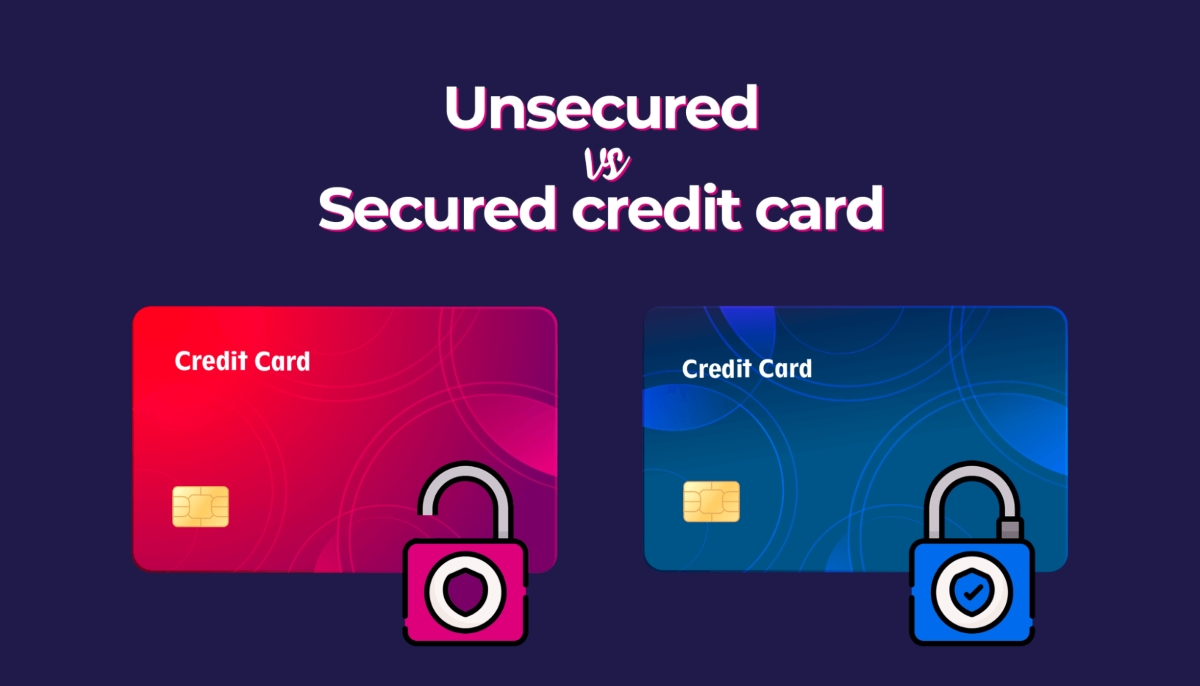Home>Finance>When Will My Navy Federal Secured Card Graduate To Unsecured?


Finance
When Will My Navy Federal Secured Card Graduate To Unsecured?
Published: March 2, 2024
Find out when your Navy Federal secured card will graduate to unsecured. Get expert advice on managing your finances and building credit.
(Many of the links in this article redirect to a specific reviewed product. Your purchase of these products through affiliate links helps to generate commission for LiveWell, at no extra cost. Learn more)
Table of Contents
Introduction
The Navy Federal Secured Card is a valuable financial tool for individuals looking to build or rebuild their credit. As a secured credit card, it requires a security deposit to establish a line of credit, making it an accessible option for those with limited or damaged credit history. However, one common question that cardholders often have is, "When will my Navy Federal Secured Card graduate to unsecured?" This transition from a secured to an unsecured card is a significant milestone that many aspire to achieve, as it often comes with increased credit limits, the return of the initial security deposit, and the potential for improved credit scores.
Understanding the process and factors that influence the graduation of a Navy Federal Secured Card to an unsecured status is essential for cardholders seeking to maximize the benefits of this financial product. By delving into the specifics of how the card operates and the criteria for graduation, individuals can better position themselves to take advantage of the opportunities that come with an unsecured credit card. In this article, we will explore the nuances of the Navy Federal Secured Card, the factors that affect its graduation to unsecured status, and actionable strategies to enhance the likelihood of a successful transition. Whether you are currently a cardholder or considering applying for the Navy Federal Secured Card, this guide will provide valuable insights to help you navigate the journey towards unsecured credit and financial empowerment.
Understanding the Navy Federal Secured Card
The Navy Federal Secured Card is designed to assist individuals in establishing or rebuilding their credit. Unlike traditional credit cards, a secured card requires a security deposit, which then determines the cardholder’s credit limit. This deposit serves as collateral and mitigates the risk for the card issuer, making it an accessible option for those with limited credit history or past credit challenges. The Navy Federal Secured Card operates in a manner similar to an unsecured credit card, allowing cardholders to make purchases, build credit, and manage their finances responsibly.
One of the key features of the Navy Federal Secured Card is its reporting to all three major credit bureaus. This reporting enables cardholders to demonstrate their creditworthiness and establish a positive credit history, which is crucial for future financial endeavors. By using the secured card responsibly and making timely payments, individuals can lay the groundwork for improved credit scores and expanded financial opportunities. Additionally, the Navy Federal Secured Card offers online account management, providing cardholders with convenient access to monitor their spending, track their credit utilization, and stay informed about their financial progress.
It’s important to note that while the Navy Federal Secured Card functions similarly to a traditional credit card, the security deposit requirement sets it apart. This deposit, which typically ranges from $200 to $5,000, determines the initial credit limit and serves as a form of collateral for the card issuer. As cardholders demonstrate responsible credit usage and payment behavior over time, they may become eligible for the card to "graduate" to an unsecured status, potentially leading to a return of the initial security deposit and an increased credit limit.
Factors Affecting Graduation to Unsecured
The graduation of a Navy Federal Secured Card to an unsecured status is contingent upon several key factors that influence the card issuer’s decision. Understanding these factors can provide cardholders with insights into the criteria used to evaluate their eligibility for transitioning to an unsecured credit card. While specific policies may vary, the following are common considerations that can impact the graduation process:
- Payment History: Consistent, on-time payments are a crucial factor in demonstrating responsible credit management. Cardholders who exhibit a history of timely payments and financial discipline are more likely to be considered for graduation to an unsecured card.
- Credit Utilization: Maintaining a healthy credit utilization ratio, which is the percentage of available credit being used, is important. Cardholders should aim to keep their credit utilization low, as it signals responsible credit usage and may contribute to a favorable evaluation for graduation.
- Overall Credit Profile: The card issuer may assess the cardholder’s overall credit profile, taking into account factors such as credit scores, other credit accounts, and the presence of any derogatory marks on the credit report. A positive credit profile can bolster the case for graduation to an unsecured card.
- Account Management: Responsible management of the secured card account, including regular monitoring, staying within the credit limit, and avoiding excessive balance carryovers, reflects positively on the cardholder’s financial habits and may support the transition to an unsecured card.
- Duration of Secured Status: The length of time the card has been held in secured status can influence the graduation decision. Cardholders who have demonstrated consistent financial responsibility over an extended period may be more likely to be considered for an unsecured card.
It’s important for cardholders to recognize that while these factors play a significant role in the graduation process, individual circumstances and the card issuer’s policies ultimately determine when a Navy Federal Secured Card transitions to an unsecured status. By proactively managing their credit and finances in alignment with these factors, cardholders can enhance their prospects for graduating to an unsecured credit card and unlocking the associated benefits.
How to Improve Your Chances of Graduation
While the graduation of a Navy Federal Secured Card to an unsecured status is ultimately determined by the card issuer, there are proactive steps that cardholders can take to enhance their likelihood of transitioning to an unsecured credit card. By strategically managing their credit and demonstrating responsible financial behavior, individuals can improve their chances of graduation. The following strategies can aid in this pursuit:
- Timely Payments: Consistently making on-time payments is paramount. By paying at least the minimum amount due by the due date, cardholders can showcase their creditworthiness and responsible financial management.
- Credit Utilization Management: Maintaining a low credit utilization ratio, ideally below 30%, demonstrates prudent credit usage. Cardholders can achieve this by keeping balances low in relation to their credit limits.
- Regular Credit Monitoring: Monitoring credit reports and scores allows cardholders to stay informed about their financial standing. Identifying and addressing any inaccuracies or areas for improvement can contribute to a healthier credit profile.
- Financial Discipline: Practicing overall financial discipline, such as budgeting, avoiding excessive debt, and managing expenses responsibly, reinforces positive financial habits that can support the case for graduation.
- Communication with the Card Issuer: Engaging in open communication with the card issuer can provide clarity on the graduation process and eligibility criteria. Cardholders may benefit from understanding the issuer’s specific policies and expectations regarding graduation to an unsecured card.
- Building a Positive Credit History: In addition to managing the secured card diligently, engaging in activities that contribute to a positive credit history, such as diversifying credit accounts and maintaining a mix of credit types, can strengthen the overall credit profile.
By implementing these strategies and maintaining a proactive approach to credit management, cardholders can position themselves favorably for graduation to an unsecured credit card. It’s important to recognize that the journey towards unsecured credit may require patience and persistence, but the potential benefits, including increased credit limits and the return of the initial security deposit, make it a worthwhile endeavor. Ultimately, by demonstrating financial responsibility and prudent credit management, cardholders can optimize their prospects for graduating from a Navy Federal Secured Card to an unsecured credit card, paving the way for further financial opportunities.
Conclusion
The journey from a Navy Federal Secured Card to an unsecured credit card represents a significant milestone for individuals seeking to build or rebuild their credit. Understanding the nuances of this transition and the factors that influence it is essential for cardholders aiming to maximize the benefits of their secured card and progress towards unsecured credit. By maintaining a proactive and responsible approach to credit management, individuals can enhance their prospects for graduation and unlock the potential advantages associated with unsecured credit.
Throughout this guide, we have explored the fundamental aspects of the Navy Federal Secured Card, including its role in establishing credit and the mechanisms that govern its transition to an unsecured status. We have also delved into the factors that affect the graduation process, emphasizing the significance of payment history, credit utilization, overall credit profile, account management, and the duration of secured status. Understanding these factors empowers cardholders to align their financial habits with the criteria considered by the card issuer, thereby improving their chances of successfully transitioning to an unsecured credit card.
Moreover, we have outlined actionable strategies for cardholders to enhance their prospects of graduation, such as prioritizing timely payments, managing credit utilization, engaging in regular credit monitoring, practicing financial discipline, maintaining open communication with the card issuer, and building a positive credit history. By implementing these strategies and maintaining a steadfast commitment to responsible credit management, individuals can position themselves favorably for graduation to an unsecured credit card.
While the journey towards unsecured credit may require patience and diligence, the potential rewards, including increased credit limits, the return of the initial security deposit, and improved credit scores, make it a worthwhile pursuit. By leveraging the insights and strategies presented in this guide, cardholders can navigate the path towards unsecured credit with confidence and purpose, ultimately unlocking greater financial opportunities and empowerment.
As individuals progress on their credit-building journey, it’s important to remember that each step taken towards responsible credit management contributes to a stronger financial foundation. Whether you are currently a Navy Federal Secured Cardholder or considering applying for a secured card, the pursuit of unsecured credit represents a pivotal moment in your financial growth. By embracing the principles of financial responsibility and leveraging the tools at your disposal, you can chart a course towards a brighter financial future, characterized by expanded credit access and enhanced financial well-being.














